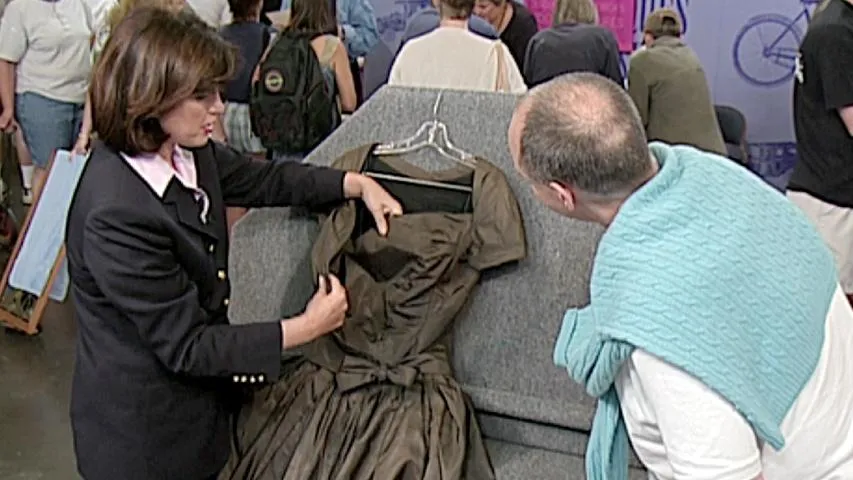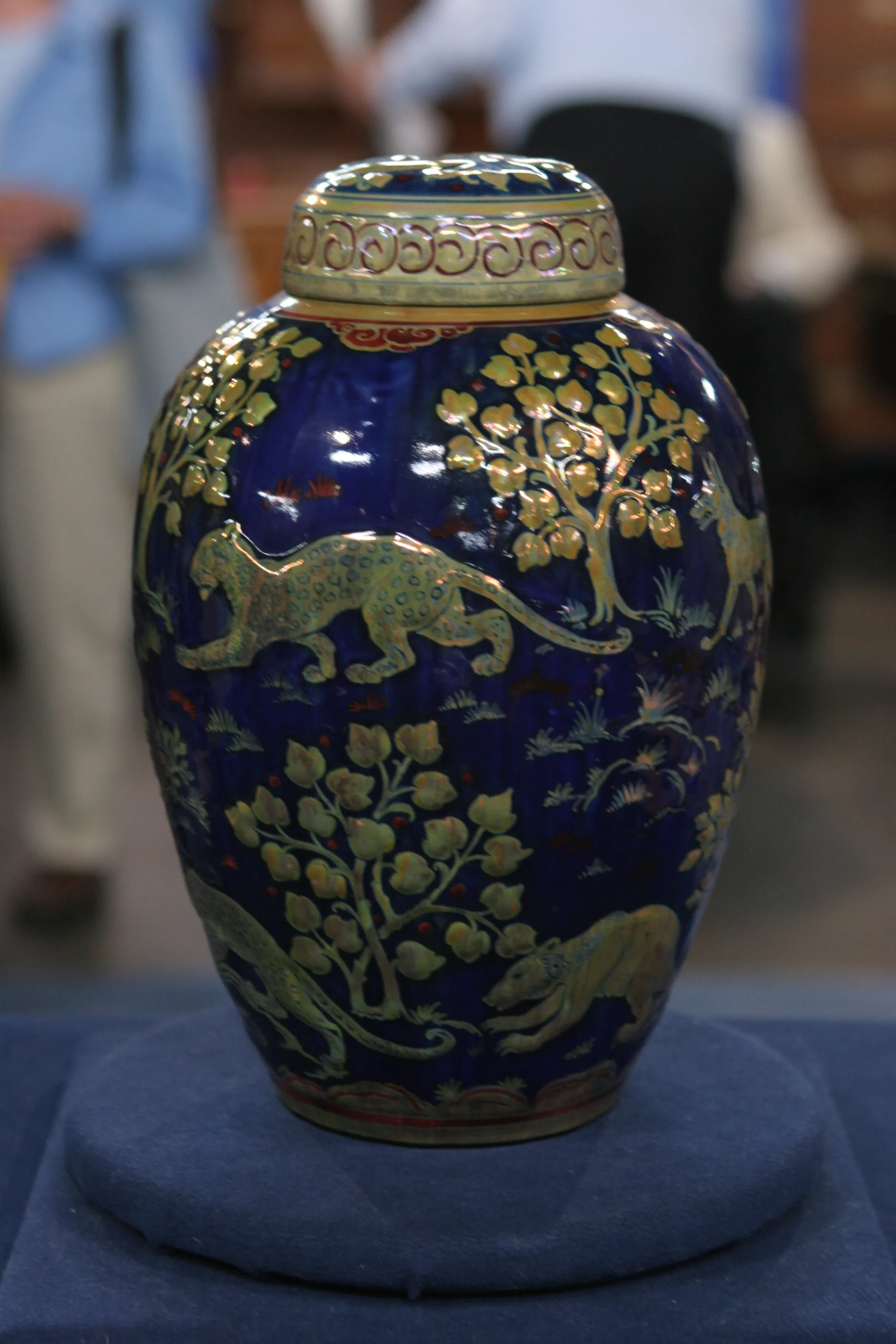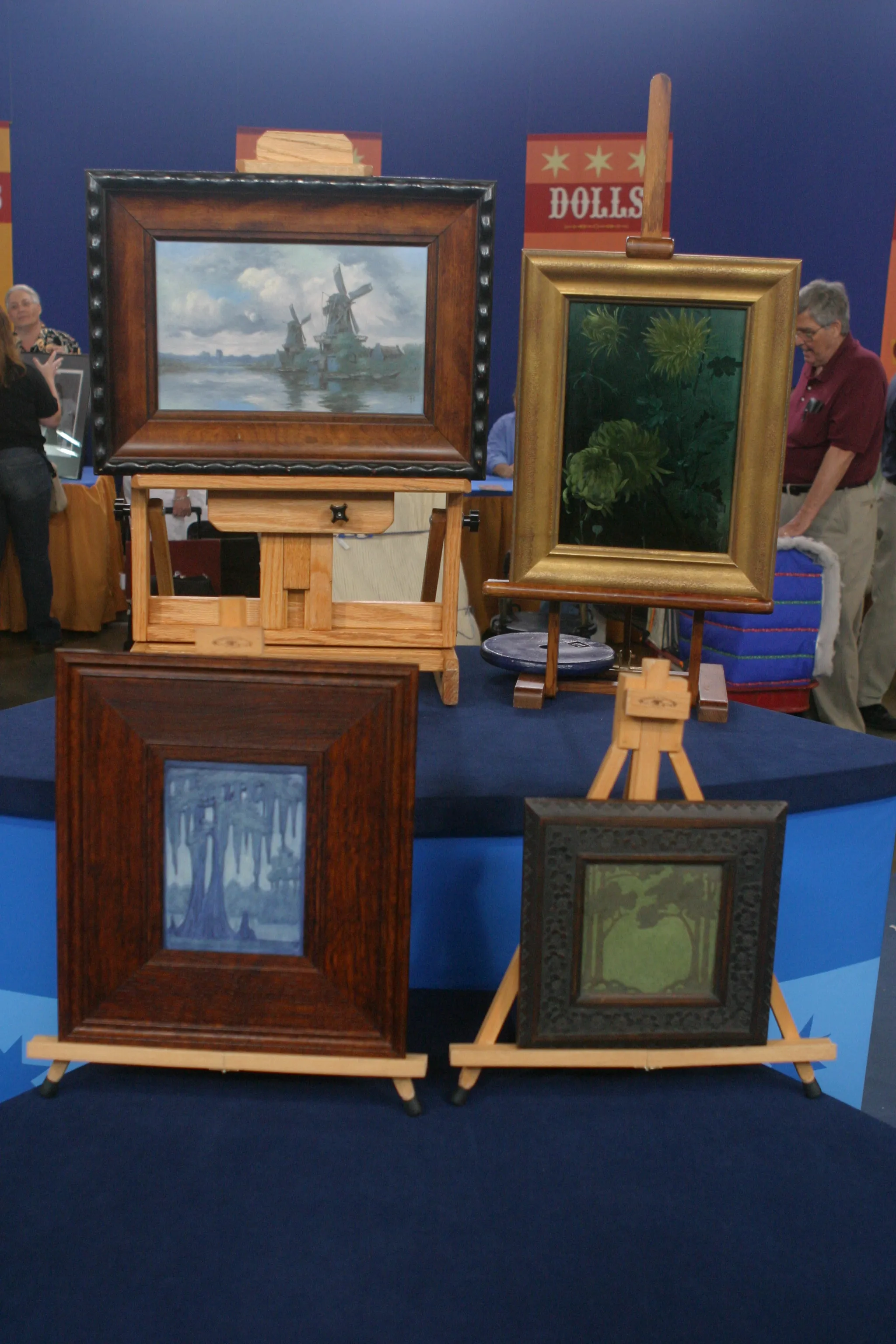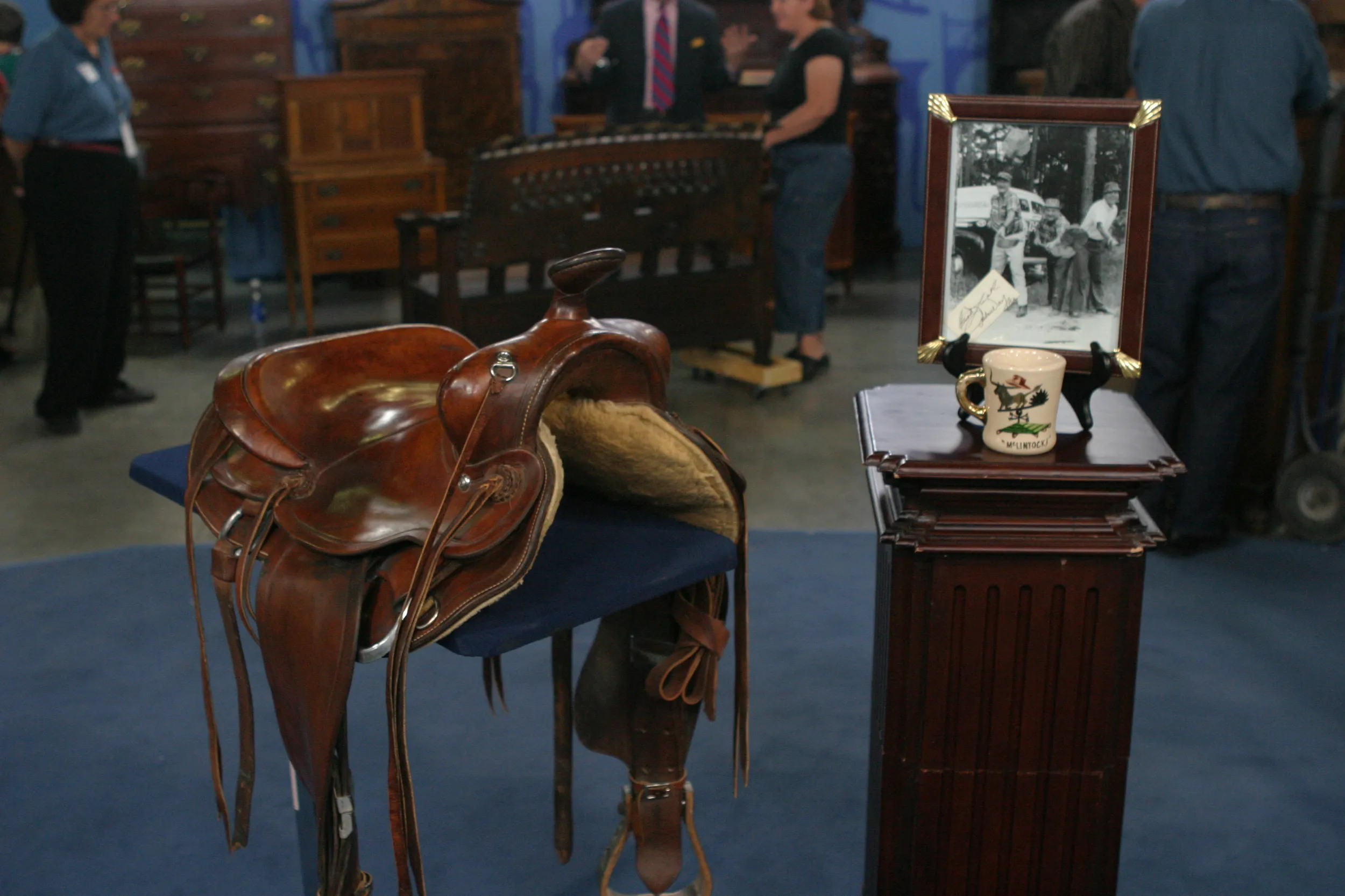APPRAISER: You tell me your family's been living in Sacramento since the 1870s. How did they get here?
GUEST: My great-great-great-grandfather came around the horn. And then the other side of the family, his wife came through the wagon trains. They stopped in St. Louis and they eventually took the first train over into the Sacramento area.
APPRAISER: Okay, so he was an early pioneer.
GUEST: Yes.
APPRAISER: And it was a very pioneering thing to do, just to go around the horn to get here from Europe, which was a very long way to get to the West Coast. Since then, I understand, they've owned this three-piece tea set.
GUEST: We know it came from my great-great-grandmother, who was born in 1877 in Alameda, California, just a little bit to the east of here. So we know it was given to her as a small child, so we're thinking maybe 1880s?
APPRAISER: This kind of pottery is what we call Majolica ware, which was a specialty of a lot of English and other potters through the second half of the 19th century, from about 1850 to 1900. This was made in the English county of Staffordshire, probably by a small pottery company called Thomas Forester, who liked to make this rich blue Majolica ware and specialized in tea ware, including small teapots and sets like this. So I think it's Thomas Forester, and the dates are right. It would have probably been made in the late 1870s, mid to late 1870s. And it's quite collectable today. It's a nice looking set, it's got a great design, great color, and it's complete, and it's really worth more today than it's ever been to a Majolica collector. I would think you're looking today at a value of at least $800, or maybe as much as $1,000.
GUEST: Wow!
APPRAISER: Such a nice set.
GUEST: Yeah.
APPRAISER: And thanks for bringing it in.
GUEST: Oh, you bet.











